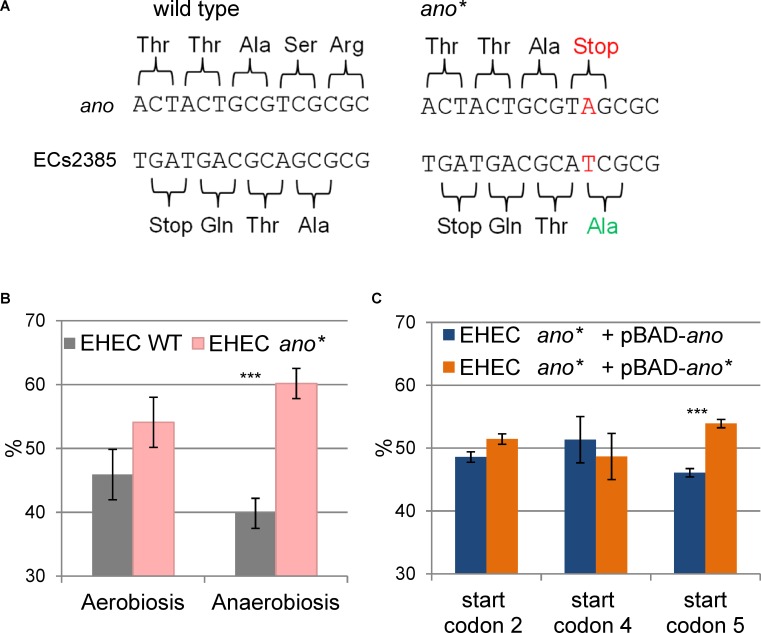FIGURE 4.
Construction and phenotype of the translationally arrested mutant ano∗. (A) Introduction of a point mutation (TCG to TAG) resulted in a premature stop codon in the N-terminal sequence of ano. The point mutation is located downstream of the ECs2384 stop codon and does not change the amino acid sequence of the antisense overlapping mother gene ECs2385. In addition, a cut site for the restriction enzyme HgaI happened to be deleted by this mutation. (B) Phenotype of ano∗. The abundance in percent of EHEC wild type (WT) and EHEC ano∗ are shown after competitive growth in 0.5×LB medium aerobically and anaerobically. Wild type and mutant were mixed in equal numbers and their ratio was determined by Sanger sequencing after 18 h of competitive growth. The mutant has a significant growth advantage under anaerobiosis. The experiment was performed in biological triplicates. Significant changes were calculated by Student’s t-test (∗∗∗p < 0.001). (C) Complementation of EHEC ano∗ in trans. The abundance in percent of EHEC ano∗ with a plasmid either having or not having a functional copy of ano shown after competitive growth anaerobically in 0.5×LB medium. EHEC ano∗ was transformed with the plasmid pBAD carrying the intact ano ORF (using either start codons 2, 4, or 5) and competitive growth was performed against EHEC ano∗ + pBAD-ano∗. The plasmid was induced using 0.002% arabinose. Only the use of start codon 5 partly restores the phenotype of the wild type. The experiment was performed in biological triplicates. Significant changes were calculated by Student’s t-test (∗∗∗p < 0.001).

